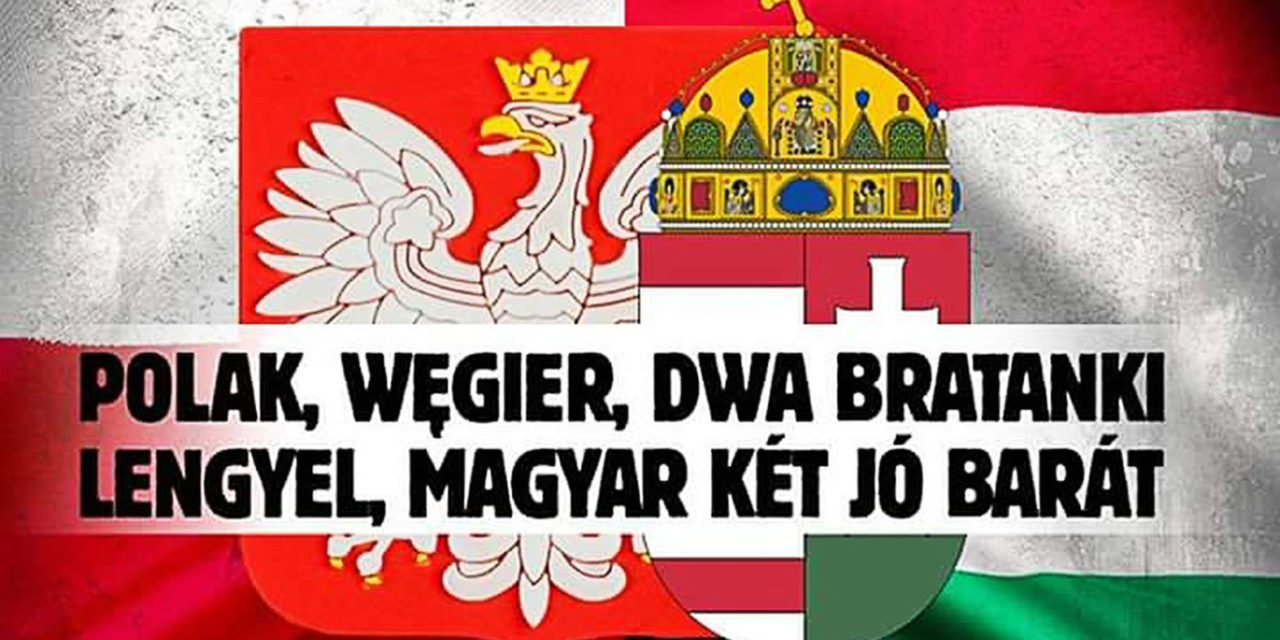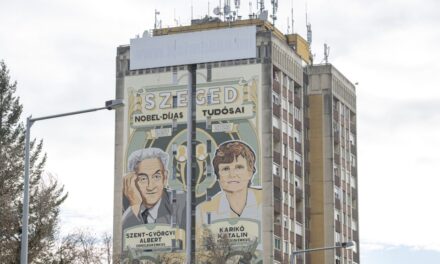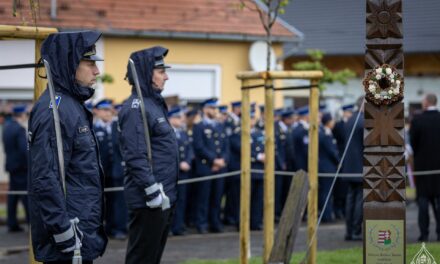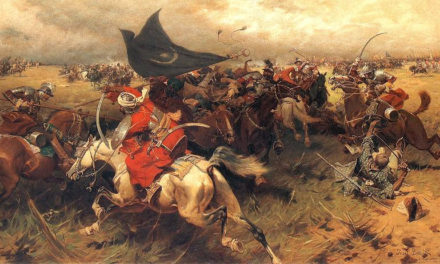"A nation that does not know its past does not understand its present, and cannot create its future!"
Europe needs Hungary and Poland... which have never let themselves be defeated.
three divisions of Poland
The first division began in 1772, when Russia, Prussia, and Austria carved out huge areas from the country's territory. The first treaty was concluded in February 1772 by Prussia and Russia in St. Petersburg. In August of this year, Austrian troops also entered the territory of Poland, since Mária Terézia did not want to miss out on the acquisition of Polish territories either. However, the freedom-loving Poles did not give up several of their cities even after the arrival of the overwhelming force. Tyniec, Czestochowa and Kraków fell only in the spring of 1773. The defenders of Cracow were exiled to Siberia by the Russian general Suvorov . Despite their promises, neither the English nor the French - as we have seen at many tragic turning points in Hungarian history - did not help. The Poles' struggle for freedom cost the lives of hundreds of thousands of their people. But it was precisely these years that marked the awakening of Polish national consciousness.
The second division of the country took place in 1793. This was preceded by the constitution of May 1792, the second modern civil constitution in the world, which ensured the separation of the branches of power (legislative, executive, judicial). These reforms provoked of Tsarina Catherine the Great , which led Russia to attack the Polish Union in 1792. In 1793, Russia and Prussia annexed new parts of the remaining territories of Poland. (After the second partition of Poland - just for the sake of comparison - proportionally, an area as large as Trianon's Hungary remained in Polish hands.)
The third and final partition took place in October 1795, as a result of which Poland lost all its territory. Hungarians did not take part in military and political actions.
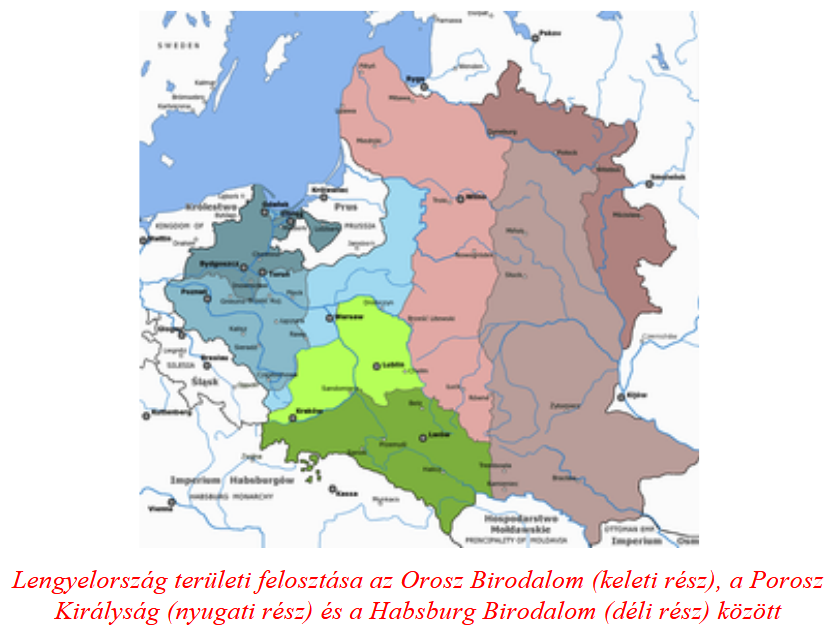
, even took away partial independence from the Duchy of Warsaw - which was established by Napoleon in 1807 This can even be considered the fourth division of the country.
Polish-Hungarian alliance in the 19th century
Polish officers, soldiers, and civilians not only fought in the Rákóczi War of Independence , but also in the 1848/1849. they also actively participated in the events of the Hungarian Revolution and War of Independence. Due to limited space, we only mention the best-known Polish heroes of freedom. First, General József Bem , born Jozef Bem (1794-1850). The talented soldier, called "little gray man" by Jókai, was born in Tarnów, Poland, and his grave is located in his hometown.
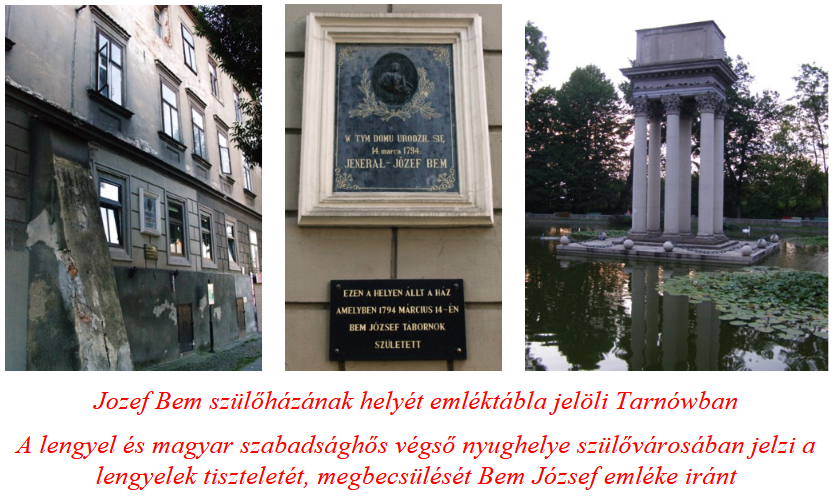
His reputation in 1830/1831. founded in the Polish War of Independence. Ostrolenka's hero in the battle against the Russians - which, by the way, ended with the victory of the Russians - stopped the advance of the tsar's main forces with his battery. After the fall of the freedom struggle, he had to leave his country, but he never gave up his fight. First in Paris, and then in Vienna in 1848, he distinguished himself by leading the military uprising against the Habsburgs. After the fall, he had to flee from here as well. He reached Hungary on an adventurous path - among other things, dressed in women's clothes - where Kossuth appointed him commander-in-chief of the Transylvanian army almost out of turn. Bem has earned the trust. Glorious victories, the liberation of Transylvania, the loyalty of the Székely people to Abó Bem and his friendship with them accompanied his glorious journey. Just think of Áron Gábor, the master gunner and military commander, or the fact that he adopted Sándor Petőfi
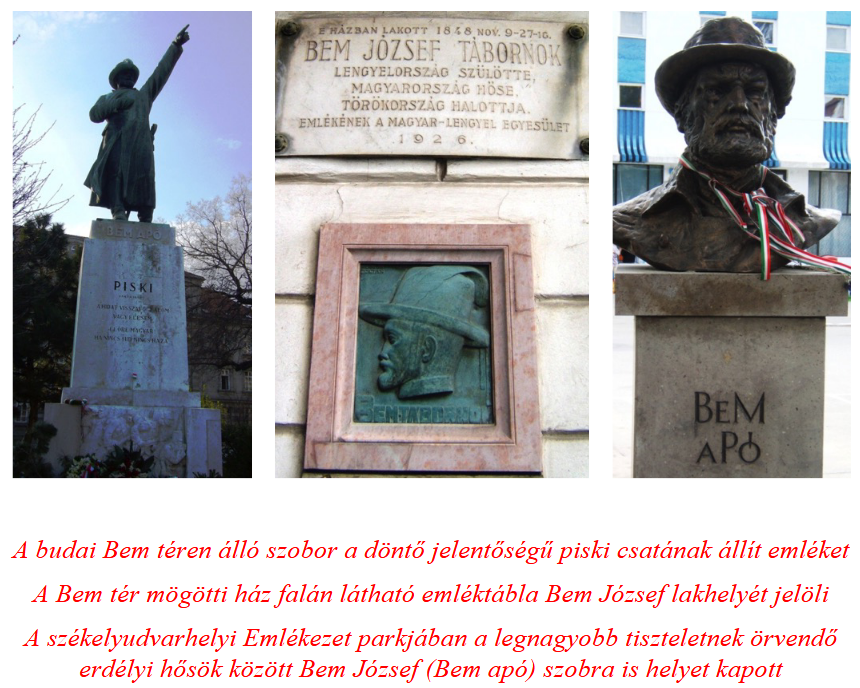 A noteworthy event of the Hungarian War of Independence is the organization and fight of the Polish legions, which began in Pest in November 1848. The legions consisted on the one hand of volunteers coming from Polish soil, and on the other hand of Polish soldiers who lined up to support the Hungarian cause from the imperial army. Jozef Wysocki (1809-1874) organized the fighting units scattered throughout the country Like Bem, he showed his military talent in the uprising against the Russians. He came to Hungary from Cracow at the head of his volunteers, where he distinguished himself in many battles, and in May 1849 he became the commander of the combined legion numbering more than 2,500 people. was succeeded by his less talented compatriot, the high-ranking Henrik Dembinszky At the same time, Dembinszky held the post of Commander-in-Chief of the Hungarian Army. (After the fall of the War of Independence, Wysocki left the country for Orsova, and his team accompanied Lajos Kossuth and the military and political leaders accompanying him to emigration.)
A noteworthy event of the Hungarian War of Independence is the organization and fight of the Polish legions, which began in Pest in November 1848. The legions consisted on the one hand of volunteers coming from Polish soil, and on the other hand of Polish soldiers who lined up to support the Hungarian cause from the imperial army. Jozef Wysocki (1809-1874) organized the fighting units scattered throughout the country Like Bem, he showed his military talent in the uprising against the Russians. He came to Hungary from Cracow at the head of his volunteers, where he distinguished himself in many battles, and in May 1849 he became the commander of the combined legion numbering more than 2,500 people. was succeeded by his less talented compatriot, the high-ranking Henrik Dembinszky At the same time, Dembinszky held the post of Commander-in-Chief of the Hungarian Army. (After the fall of the War of Independence, Wysocki left the country for Orsova, and his team accompanied Lajos Kossuth and the military and political leaders accompanying him to emigration.)

The First World War was hell on the Polish front
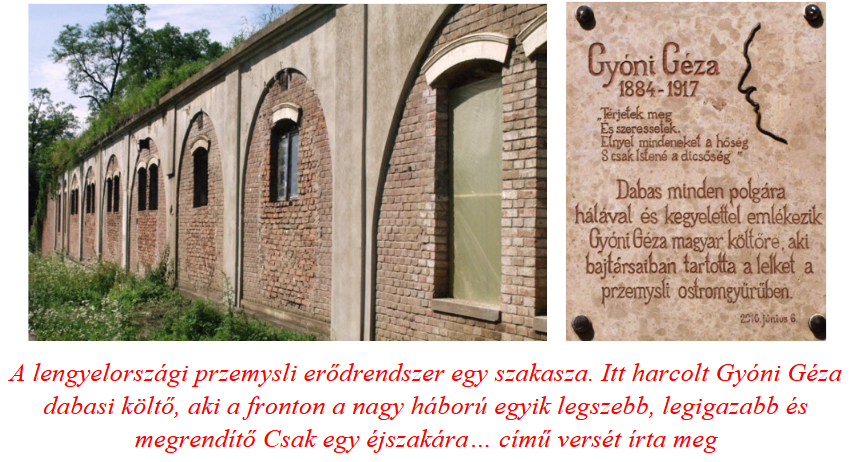
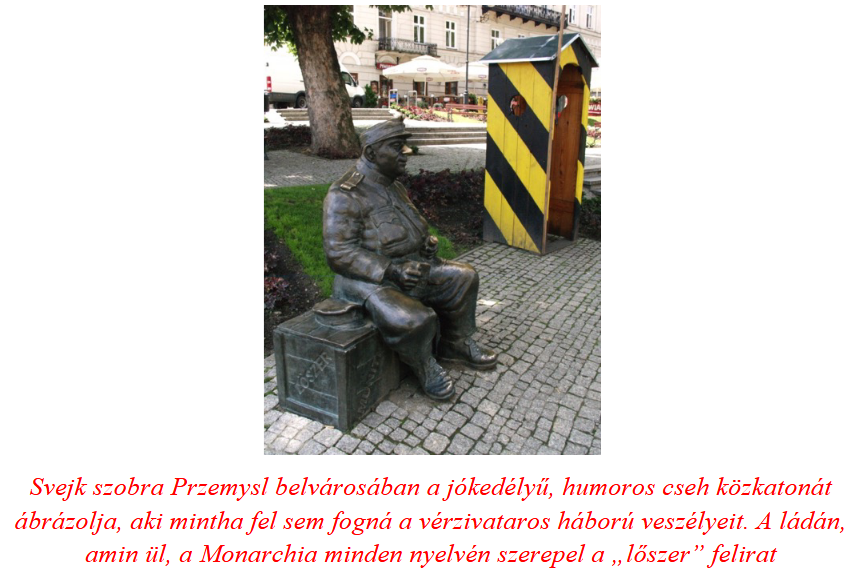
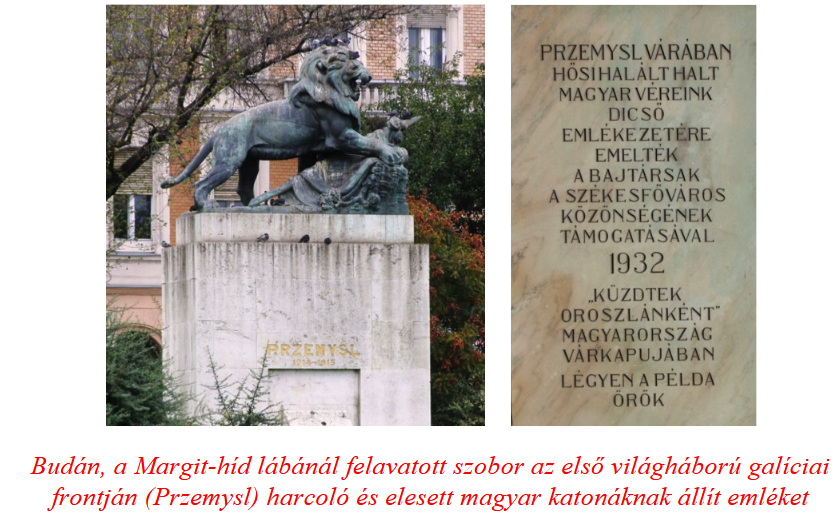
In the Battle of Limanova at the end of 1914, the Hungarians stopped the "Russian steamroller", which was one of the bloodiest battles of the war. On the front, 30,000 Russian and 12,000 Austro-Hungarian-German soldiers fell or became incapacitated.
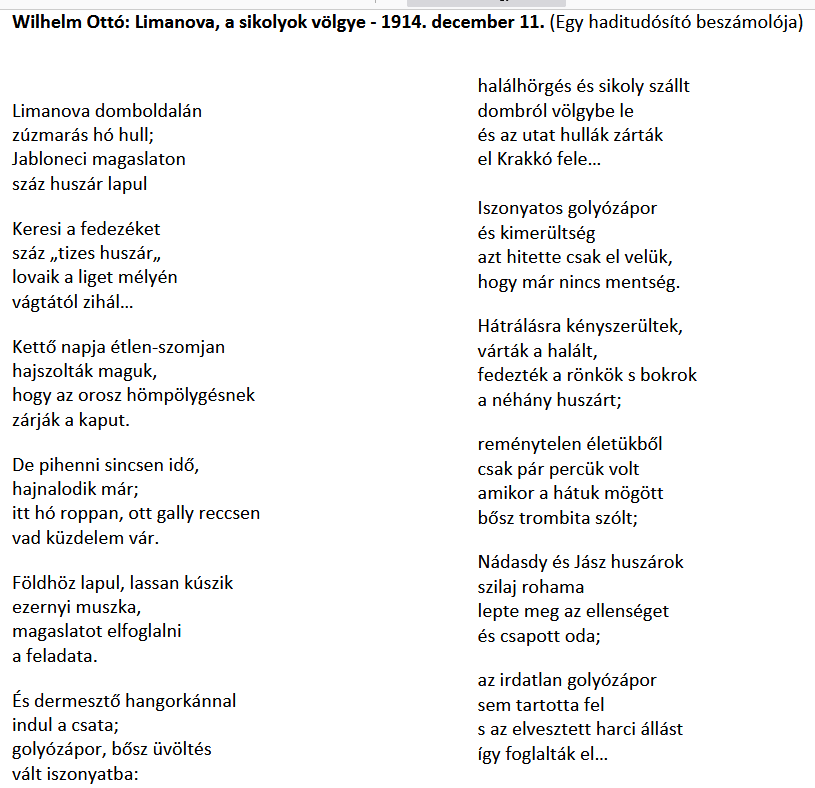
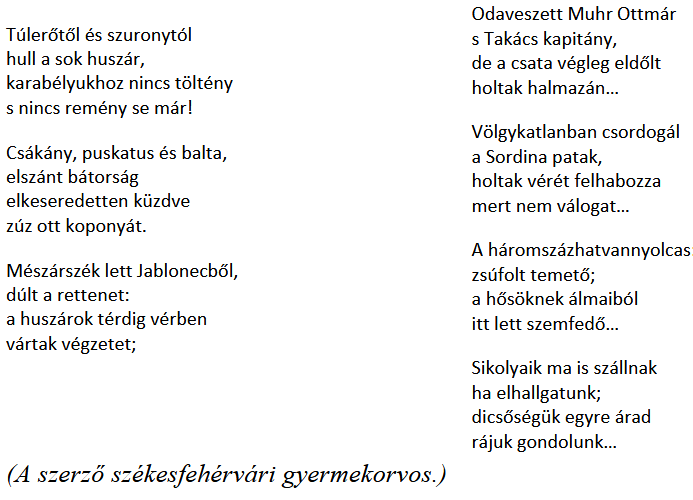
The creation of the new Polish state
For the Poles, the hope of re-establishing an independent state was provided by the First World War.
Józef Pilsudski (1867-1935) was the leader led to Polish Thanks to his family upbringing, he absorbed the national feeling and the inevitability of the fight against the Russians as a child. At the age of twenty, he experienced the hell of exile in Siberia. Returning to his homeland, Pilsudski organized the Fighting Association in 1905. In the First World War, he created Polish legions, at the head of which he fought against the Russians together with the Hungarians, Germans, and Austrians. The Polish-Soviet war of 1919-1921 brought success, the winning of the independence of the new Polish state, and then its leadership. It is decisively thanks to him that after the end of the war, in 1918, Poland regained its independent statehood after 123 years.
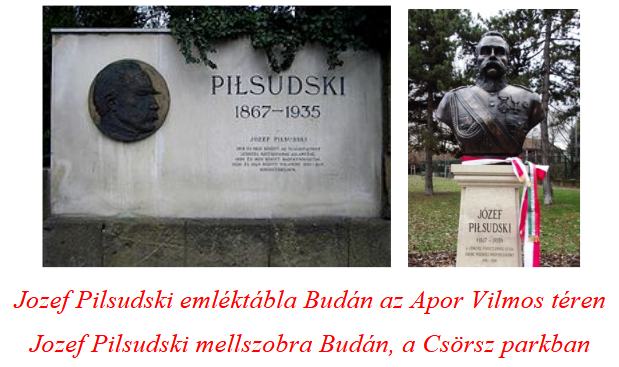
The Hungarian-Polish cooperation and assistance was also manifested in the fight against the Soviets (Russians). Between 1919-1921, when the young Poland that was just being formed was in a life-and-death struggle Lenin's Bolshevik state, the Polish army was left without weapons and ammunition. Under the name of "Polonia" military aid, Hungarian diplomacy delivered war material from some countries of the West to Warsaw via Hungary. Railway trains, especially starting in 1920, transported more and more Hungarian-made equipment. This was of great importance, on the one hand, because the help from the West dried up after a while, and on the other hand, the Czechs prevented the munitions from arriving in Poland on more and more occasions. Railway trains carrying ammunition and weapons often ended up in Prague.
 RESPECTFUL TRIBUTE TO THE HUNGARIAN NATION, WHICH PROVIDED FRIENDLY AID TO THE REPUBLIC OF POLISH, DEADLY THREATENED BY BOLSHEV AGGRESSION.
RESPECTFUL TRIBUTE TO THE HUNGARIAN NATION, WHICH PROVIDED FRIENDLY AID TO THE REPUBLIC OF POLISH, DEADLY THREATENED BY BOLSHEV AGGRESSION.
DURING OUR DECISIVE FIGHTS, ON AUGUST 12, 1920, A SHIPMENT CONTAINING 22 MILLION BULLETS ARRIVED IN SKIERNIEWICE FROM BUDAPEST, FROM THE WEISS MANFRÉD WORKS IN CSEPELI. BETWEEN 1919-1921, THE GOVERNMENT OF THE KINGDOM OF HUNGARY SENT ALMOST 100 MILLION RIFLE CHARGES, LARGE QUANTITIES OF ARTILLERY AMMUNITION AND MILITARY EQUIPMENT TO POLAND."
Due to the hostile actions of the left-wing movements listening to Soviet inspiration, shipments from Western countries ceased, after a while only Hungarian ammunition helped Pilsudski's troops.
Thanks to this, a comprehensive Polish counterattack was launched on August 15, 1920, and the capital and its surroundings were liberated in a short time .
Even today, Poles proudly mention the victorious Battle of Warsaw, which created the possibility of the establishment of the new Polish state. (Presumably this is what the Poles thanked when Miklós Horthy received the Order of Merit of the White Eagle in 1929.)
Polish-Hungarian memories of the Second World War
The European history of the 20th century caused another tragedy for the Poles, but at the same time they could experience again and again that they could only
count on the Hungarians in times of trouble.
(It should be noted, however, that the new Polish state - keeping its own interests in mind - did not openly oppose the Trianon decision with sufficient weight.) Perhaps this is due to the secret diplomacy between the two countries starting in the 1920s. came to the fore. However, in the 1930s, thanks to the Polish-Czech antagonisms, Warsaw again sought the friendship of the Hungarians. In 1938, Miklós Horthy traveled to Warsaw for an official visit. After the division of Czechoslovakia in 1938, Hungarian revisionist efforts did not end. Hitler's wishes, Hungarian troops entered Transcarpathia in the spring of 1939, thus creating a joint Polish-Hungarian border. After a short time, this became of enormous importance, as it was the only land escape route for the Poles. The Teleki government (1938-1941) declared that it was not willing to participate in the operation against the Poles.
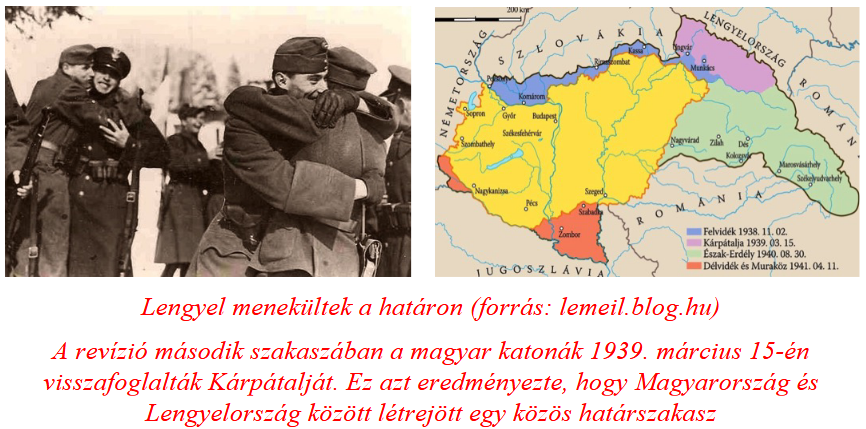
Germany invaded Poland on September 1, 1939, leading to the country's collapse. On September 17, 1939, the Red Army invaded the country from the east. The situation in 1772 was almost repeated. (It is understandable that, based on their centuries of experience, the Poles are still unwilling to accept any kind of alliance with the Russians.) Poland was once again left alone. It is a matter of debate how many refugees arrived in Hungary. All kinds of numbers occur, from 50,000 to 140,000. Many people also came to Romania, Yugoslavia and Italy via Hungary. Most of the officers and soldiers ended up in France and England, where they joined the fighting units of the Allies fighting against the Germans.
Count János Esterházy , the president of the Hungarian party in Czechoslovakia, also played a role in the evacuation and care of the Poles (You should know that János Esterházy's mother - Elzbieta Tarnowska - was a Polish countess.) János Esterházy, who gave his life for the cause of Hungarians, saved Polish lives in these years. In addition to all of this, he also played a major role in saving Polish art treasures and bank items. Officials representing the Hungarian and Polish governments founded the Hungarian-Polish Asylum Committee on September 22, 1939.
A bust of János Gróf Esterházy was erected in Warsaw as a sign of respect and gratitude. Earlier, in 2009, János Esterházy received the Polonia Restituta award posthumously from the then President of the Republic Lech Kaczynski
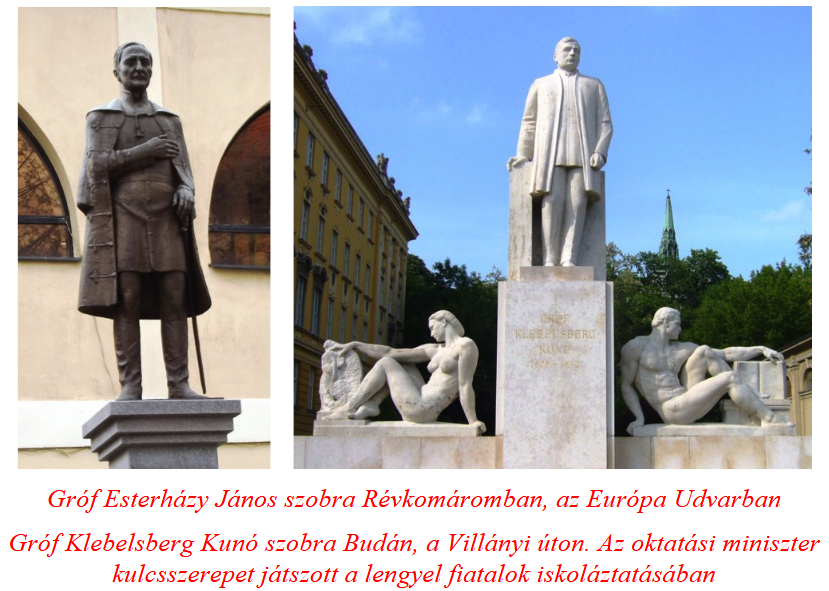
The most lasting memory of the Hungarian help to the Poles was shown in school education. More than five hundred children - who came to our country without parents - were able to continue their school studies in Zamárdi and then in Balatonboglár. , the education was organized under the hidden name Youth Camp, Béla Varga During the war, the only Polish-language high school in Europe operated here. Higher education, which affected nearly five hundred students, was distributed among the Hungarian university faculties. This high-level preparation ensured that a layer of Polish intellectuals could start their work after the war. There were 18 primary schools in our country, for example in Barcs, Keszthely, and Kadarkút. In many places, the children lived with their parents.

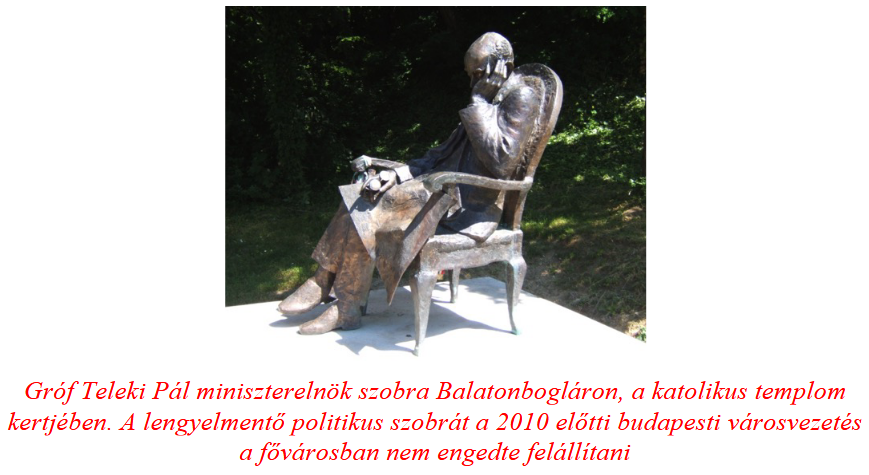 Similar to education, the Hungarian government also expanded its activities in other areas of life.
Similar to education, the Hungarian government also expanded its activities in other areas of life.
Among other things, he organized patient care within the framework of the health care system .
Hospital departments could operate in Győr, Keszthely, Mátraháza and many smaller settlements. The support extended to several branches of Polish cultural life, such as theater performances, the launch of literary magazines, and the organization of other programs, which were mainly enjoyed by children and young people.
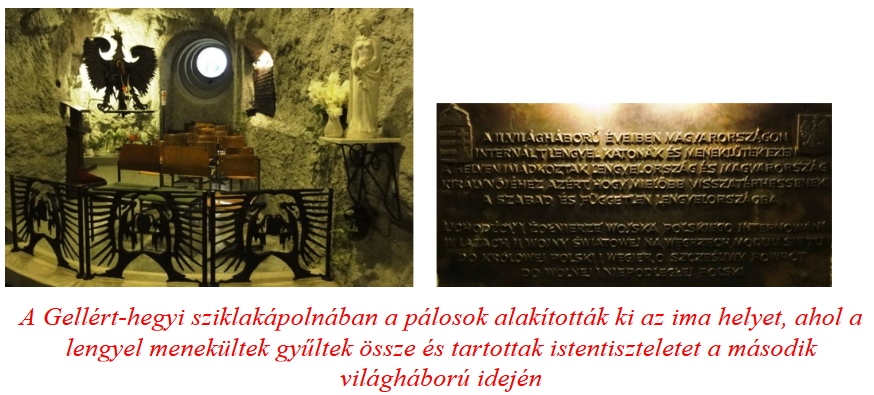 In the years of the Second World War, in addition to the aforementioned politicians, dozens of Hungarian intellectuals did irreplaceable and dangerous work for the Poles. József Antall Sr. who was the father of József Antall, the first freely elected Prime Minister in 1990, stood out among them.
In the years of the Second World War, in addition to the aforementioned politicians, dozens of Hungarian intellectuals did irreplaceable and dangerous work for the Poles. József Antall Sr. who was the father of József Antall, the first freely elected Prime Minister in 1990, stood out among them.
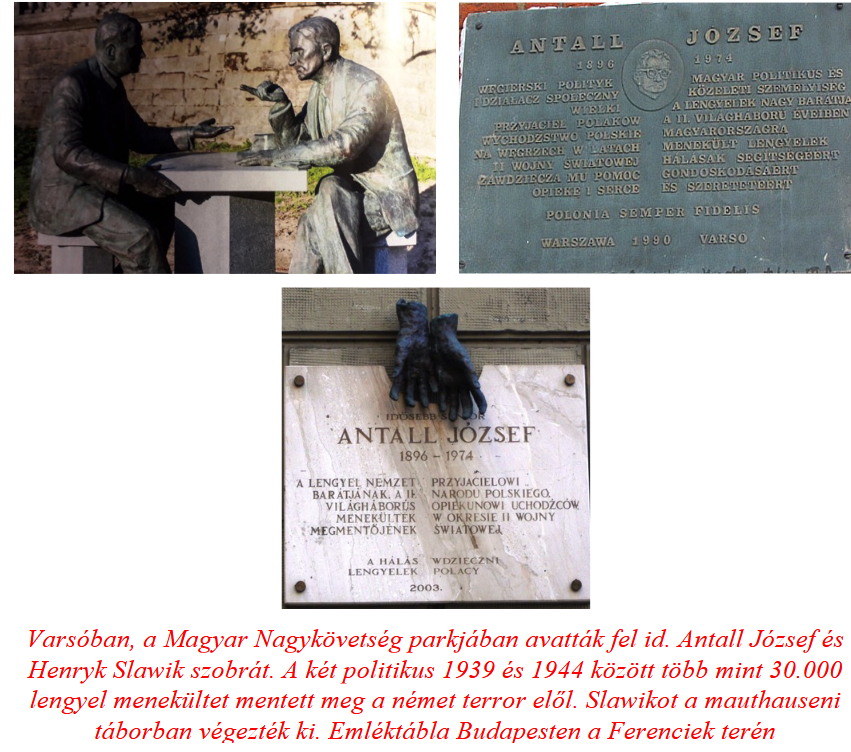
Óbuda - Katinyi Memorial
In Óbuda, on the square in front of the Árpád High School, the Katinyi Martyrs Memorial was inaugurated in April 2011.
Budapest was the first of the Central European capitals to erect a memorial to the events that took place in Katyn.
In 1940, the Soviet People's Commissariat of Internal Affairs (NKVD) carried out one of the most disgraceful mass executions in European history. About 23,000 Polish officers, officers and reserve officers imprisoned in prisoner of war camps were murdered. Most of them individually! they were shot in the head and then the bodies were thrown into mass graves.

1956 Poznan - Budapest
June 28-30, 1956 A mass demonstration of a large number of workers began in Poznan between About 100,000 people took part in the mass meetings, demanding the departure of the government. The demonstration was suppressed by the Polish communist government, naturally with the support of Moscow. The number of deaths in Poznan these days can be estimated at between 50 and 100.
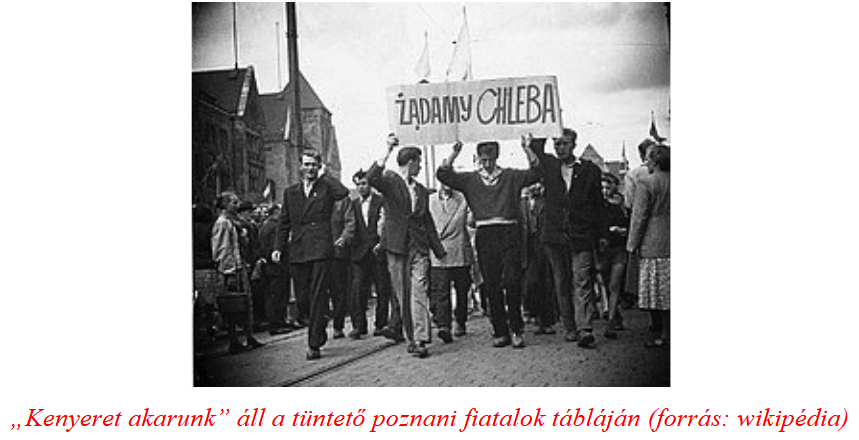
The Hungarian revolution of 1956 was rooted in the mass demonstration in Poznań.
It is no coincidence that the Budapest uprising began at the Bem statue, where the Polish demands from Poznań were initially voiced. The two-week long Hungarian revolution and freedom struggle was the largest uprising against the communist system that came to power in Eastern and Central Europe in 1945. Although the Hungarian revolution was drowned in blood, the Soviet system never suppressed it. One of the most significant "replacements" for the Hungarian blood sacrifice was when thousands of Poles donated blood to Hungarian hospitals to heal the wounded.


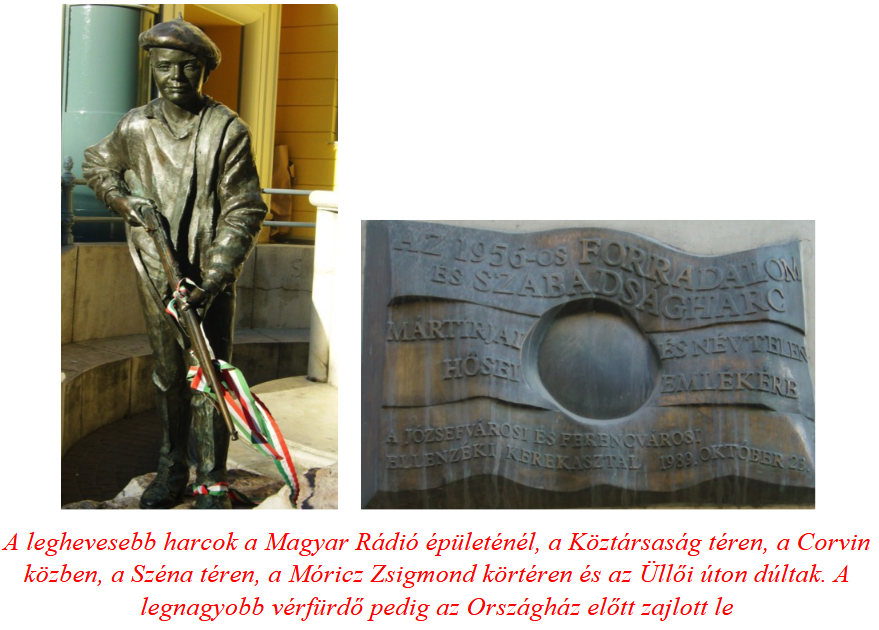
The uprising in Hungary was much larger than the uprising in Poznań or the East Berlin uprising that erupted on June 17, 1953. The latter was defeated in one day by the German and Soviet armed forces. The Hungarian communists and the Soviets, who were only cautiously supporting them at the time, were unable to master the revolution that spread from the Hungarian capital to the countryside. After the victory of the revolution, the Hungarians could only be defeated by deploying the organized and large forces of the Soviet army. In addition to the bloody battles in Budapest, gunfire also broke out in several rural towns, resulting in dozens of deaths. The fiercest battles took place in Miskolc, Salgótarján, and Mosonmagyaróvár.
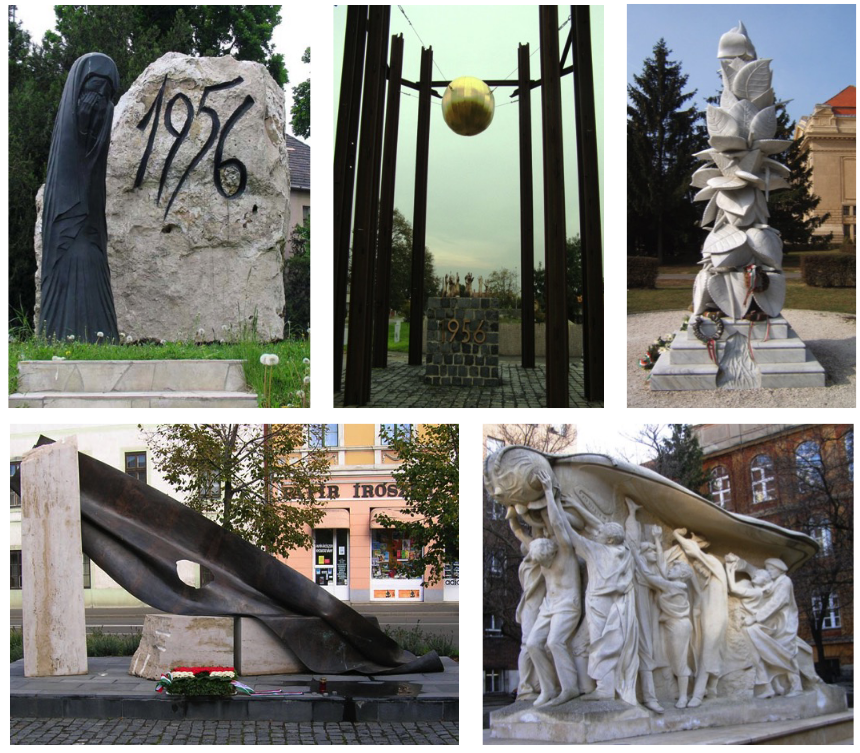

Budafok - Mementó Szmolenszkért monument
In the two countries, mutual respect is constantly shown, including by erecting monuments and public statues.
One of the most successful works was inaugurated on April 6, 2018 in Budafok-Tétény, on the banks of the Danube.
The Mementó Szmolenszkért monument commemorates the Polish tragedy of 2010, which was created at the initiative of the prime minister in the XXII. district. Lech Kaczynski , the former head of state, Jaroslaw Kaczynski , took part in it .
The Budafok-Tétény municipality carried out the arrangement and most of the work on the Budafok area, which had not been used until then.
The work commemorates the victims of the Katyn carnage and the Smolensk air disaster. A Polish state delegation in 2010 - President Lech Kaczynski and his 96-member high-ranking officials - was on their way to Katyn to pay their respects to the victims executed in 1939/1940. The plane carrying the Polish delegation crashed near the border of Smolensk, and everyone died terribly.

The black granite monument standing on the hill representing the graves of the dead depicts a cross, which also evokes the coffin nail, but the shape also refers to the downed plane. The two shards piercing each other express the tragedy affecting the Poles in 1940 and 2010.
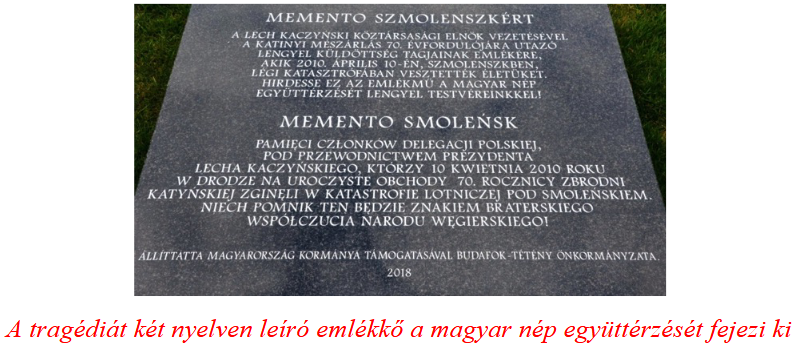
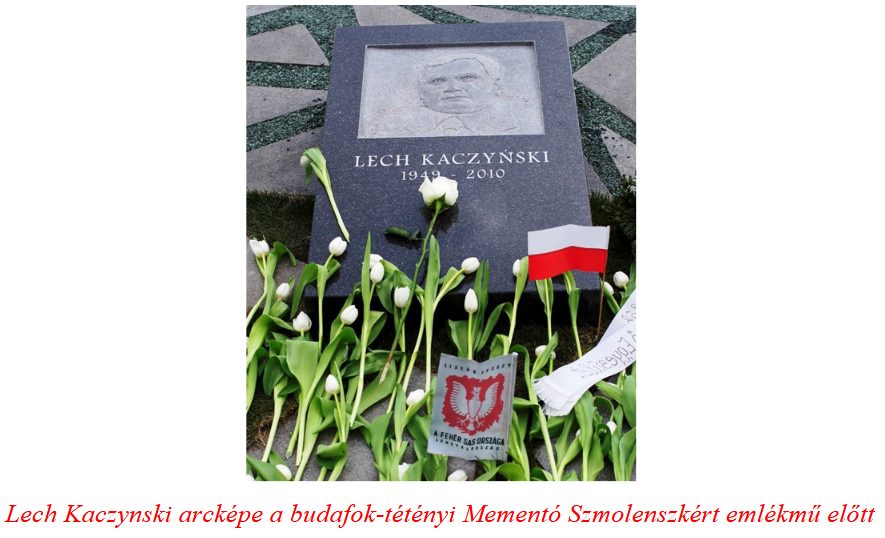
From the cross on the hill, a path symbolizing tree branches leads to the gate, whose white purity refers to life, hope after death and redemption.
The two intertwined branches of the gate represent the Polish-Hungarian friendship and at the same time the solidarity of the Hungarians towards the Poles. The monument in Budafoki - the Gyula Sándor Makoldi - is one of the finest in the series of works that similarly present the Polish tragedy, including sculptures from Poland. This is highlighted by the Poles who visit here.
Author: Ferenc Bánhegyi
(Cover image: zaszlo.hu)
The parts of the series published so far can be read here: 1., 2., 3., 4., 5., 6., 7., 8., 9., 10., 11., 12., 13., 14., 15., 16., 17., 18.

